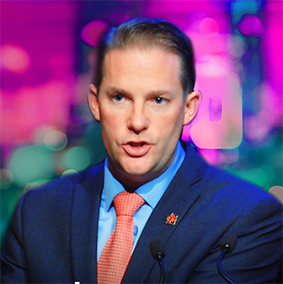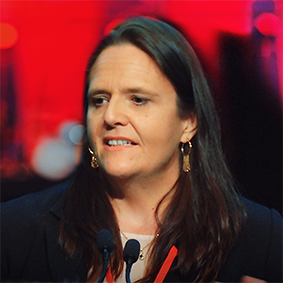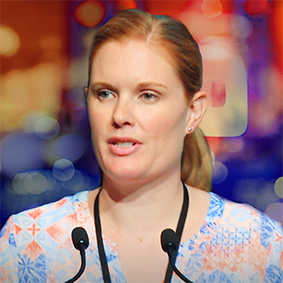ACCESS READS: HOW WE INCLUDE
The University of Vermont’s Centre on Disability & Community Inclusion, established in 1974 in in the New England region of the north eastern United States conducts, applies and shares knowledge and resources between the University and Vermont communities in the areas of education, research, and services relative to the needs of people with disabilities to improve lives.
Associate Professor Jesse Courntey Suter and Professor Michael F. Giangreco have contributed to the work of the leading centre that advances inclusion of people with disabilities in all areas of life and designing strategies that promote inclusion, diversity, and self-determination.
Family Advocacy support the notions articulated by the American academics in the following article which explores the need for the practice and implementation of inclusive education service delivery to be more proactive, more purposeful and less reactive.
There was a time when it was assumed students with disabilities were best served in settings such as segregated special schools or classes. As this assumption has given over in recent times to supporting and educating students with intensive educational needs within general classrooms in regular neighbourhood schools, adaptation challenges for educators and school administrators have arisen in the main part due to the absence of unified, systemic and inclusive education services delivery. It is a longstanding challenge to the education of students with the full range of disabilities in inclusive schools and classrooms.
American academics; Jesse Suter—a proponent of real world implementation of community and school-based interventions and the Wraparound process (the interdisciplinary team-based planning process for meeting the needs of children)—and Professor Michael Giangreco—whose work explores planning, adapting, coordinating, implementing, and evaluating educational programs and services for students with disabilities in general education classroom settings—as part of their activities at the Centre on Disability & Community Inclusion at the University of Vermont, undertake real world research into models of practice.
In an article published in the American Association on Intellectual and Developmental Disabilities Journal in 2015 the academics indicate that their work and findings has implications for practice and future research, and should be regarded as a starting point for further discussion, creative problem solving, and action planning for model development suited to local contexts.
The overarching message from Giangreco and Suter is the pressing need for inclusive education service delivery to be more proactive and purposeful and less reactive. Too often, they write, ‘this reactive, add-on, approach, at best, is a temporary solution fraught with well-documented practical, ethical, and instructional challenges … in an effort to stabilise day-to-day functioning of schools and avoid unwanted consequences (student behaviour problems, teacher concerns, parent concerns).’
‘Imagine,’ they write, ‘if the resources currently directed toward avoiding and stabilizing were redirected and schools could proactively design and implement purposeful models of inclusive service delivery.’
Schools also have, the academics point out, ‘operational practices such as master schedules (e.g., literacy blocks, grade-level team meetings) and other general education models of service delivery which may or may not account for the full range of student diversity in those schools. In many cases,’ they say, ‘these models were designed and built before schools encountered the wider range of student diversity they serve today. With the incremental enrolment of students with increasingly intensive support needs, resources are being spread increasingly thin’. Some schools, the academics note, are slower than others and have only made minimal changes, ‘tinkering around the edges; which is neither sustainable nor desirable from an educational or equity perspective’.
Giangreco and Suter also question the extensive use of pull-out special education approaches arguing students with disabilities ultimately, hampers progress. ‘Collectively, we have long known how to pull students with disabilities out of regular classes and provide individualized instruction. We also have a substantial history of placing some students with disabilities in regular classes with insufficient supports and without providing quality instruction. Neither of these options is desirable.’
They go on to say, ‘What we are less skilled at, collectively, is ensuring quality, supported, individually appropriate, curriculum and instruction for students with the full range of disabilities while retaining student benefits (and their rights) to be educated alongside their peers without disabilities in the classrooms and schools they would attend if they were not classified disabled. Without the ongoing presence of students with the full range of disabilities in the regular classroom, the impetus for change and the opportunities to problem solve and create new solutions are less likely to occur, unnecessarily compromising or delaying their educational and civil rights’
The authors of the article note that such aims are challenging, and learnings can potentially be bumpy but it is ultimately an important path to pursue.
The academics refer to research conducted in inclusion-oriented schools that indicates the following service delivery variables and practices impact on equitable access to appropriate and quality educational opportunities:
(a) special educator caseload size and configuration
(b) range of grades supported by special educators
(c) percent of pull-out instruction delivered by special educators
(d) ratio of special educators to special education paraprofessionals
(e) extent of one-to-one paraprofessional deployment
(f) numbers of paraprofessionals special educators supervise
(g) percent of student instructional time with teachers, special educators, or paraprofessionals
(h) roles of team members and corresponding time spent in those roles.
Giangreco and Suter are committed to providing examples for inclusive education service delivery that are ‘plausible’ and can work with already available school resources as an alternative to approaches currently practice determined to fill an important gap in the literature. By presenting practical, data-based, and conceptually grounded examples of an inclusive education service delivery model they hope schools seeking to extend inclusive opportunities to more students with disabilities in general education classes have a way forward.
The authors envision school models built on a combination of professionals such as teachers, special educators, related services providers and natural supports like peer mentoring and where services are offered primarily in class, rather than as a pull-out service.
‘If schools are serious about including all students, retaining personnel, and pursuing quality educational opportunities and outcomes, they will need to confront the foundational issue of class size’ they contend. ‘Some schools base placements of certain students with disabilities by asking questions such as, ‘‘Do the existing conditions in the classroom (environment, technology, personnel capabilities, attitudes, practices) suit the student’s needs?’’
Posing the question this way, puts the onus on the student to fit into the classroom and likely maintains the status quo. The inference here is that if the student can fit in without necessitating substantial change, he or she can be included. If substantial change is needed, the student is more likely to be excluded.
Reframing the question to ‘What changes would be required in the classroom (environment, technology, personnel capabilities, attitudes, practices) for a student with unique needs to be successfully included?’ more of the onus is on the school to design a better environment that and remove barriers to inclusion.
When school teams ask the second question, they challenge the status quo and extend their capacity for change that more often than not will benefit a broad set of students beyond those for whom the original change was targeted.
Suter and Giangreco’s exemplar model entails conceptual and programmatic shifts to accompany structural change where increasingly systems in general and special education are more integrated and special and general systems are no longer substantially separate.
A unified educational system that support the inclusion of all students in general education classrooms, including those with the full range of disabilities requires multi-tiered systems of service delivery.
Instead of functioning primarily as case managers overseeing paraprofessionals Giangreco and Suter would like to see special educators function as key classroom-based team members who codirect and supervise the work of a smaller set of classroom-based paraprofessionals shifting schools away from the pull-out approach to in-class support.
Moving away from isolated student support by special educators for relatively short periods of time (e.g., three times a week for 30 minutes), toward building capacity to implement universally designed instruction embedded throughout the school day by teachers and other team members also means a larger percentage of teaching comes from qualified teachers and special educators and less from paraprofessionals outside of the classroom.
In the ‘exemplar model classroom’ that Suter and Giangreco’s envisage, all three types of core personnel; teachers, special educators and paraprofessionals, are on hand to support all students, irrespective of labels and/or characteristics. This is a foundational equity issue and ensures students with disabilities have at least the same level of access to a program of learning delivered by qualified teachers that are offered to students without disabilities.
The researchers add that when schools are considering inclusivity options they need to be mindful that any innovations they implement do not inadvertently working at cross purposes. Rather, they suggest, ‘schools should focus on selecting and integrating innovations that are compatible with established underlying assumptions, are within an overarching framework and service delivery plan and are compatible. Giangreco and Suter elaborate, ‘all-too-often [we hear] schools would like to pursue an innovation, but feel constrained by financial rules or regulations. In some cases, the financial tail is wagging the programmatic dog, rather than the education community envisioning an educational approach and then developing financial practices to support or incentivise the practice or innovation.’ They go on to say, ‘any adjustments to financial practices should encourage flexibility to allow schools to keep pace with an ever-changing educational landscape and be nimble enough to pursue innovative approaches, while. they maintain appropriate educational integrity and accountability.’
At the individual student level, Giangreco and Suter point out, ‘specific language of how education services for students with disabilities needs to evolve in ways that align with more inclusive service delivery options while still ensuring that students needs are met. Teachers must be prepared to play key roles in educating students with a wide range of learning characteristics and challenges as part of teams within multi-tiered systems of support.’
This they say, ‘requires collaboration with students’ families and shifting away from exclusive focus on supporting targeted students towards also supporting the teacher and classroom community.
School administrators such as principals and district office personnel will need to reset their approach to facilitate a change away from historically separated silos of general and special education.
While there are requirements from education professionals to take lead roles in improving inclusion-oriented practices, there are also important roles for students with disabilities, their parents, and other advocates to facilitate advancement argue Giangreco and Suter.
Given what is known about the inadvertent yet detrimental effects of one-to-one paraprofessional segregated special ed, advocates can press for a shift away from these practices to be replaced with a combination of alternatives that build classroom-based capacity and natural supports which are less disruptive to students with disabilities learning and also enhances their opportunities to be integral members of the classroom community.
Giangreco and Suter say they are,’ encouraging exploration of ways supports can be offered differently, in ways that are compatible with more fully inclusive educational opportunities.’
Shifts like those described above are designed to improve the consistency, integrity, and quality of supports.
Acknowledging change can ‘sometimes feel risky’, the researchers suggest decisions should be:
(a) made collaboratively by the educational team which includes the family
(b) rooted in a set of shared values that the team refines over time
(c) subject to ongoing data collection to evaluate whether the team’s action have been effective.
Measures of success can include positive impact on valued life outcomes such as:
health, relationships, self-determination and inclusive participation in and out of school.
Conclusions and Implications for Practice and Future Research
Comprehensive models of inclusive education for students with disabilities remain partially implemented and largely aspirational. It is time for the development of logical, conceptually, and theoretically grounded models of inclusive education practices to replace decades of add-hoc approaches
We require leaders with vision, skills, organisational acumen, and the political will to implement and evaluate locally determined models of inclusive education delivery.
Family Advocacy considers a good starting point is the development of a variety of proactive local models that suit local contexts that can be tested and evaluated in both primary and high school contexts.
—
This article is derived from Michael F. Giangreco and Jesse C. Suter’s Precarious or Purposeful? Proactively Building Inclusive Special Education Service Delivery on Solid Ground originally published in the INCLUSION Journal, Vol. 3, No. 3 (2015)
CONTINUE READING

WHAT IS INCLUSION
The promotion, adoption and implementation of inclusive practices, which involves changing policies, practices and attitudes within schools.

HOW WE INCLUDE
Inclusive classrooms and schools embrace universal design as the foundation for cultivating inclusive attitudes and practices.

CHANGING MINDSETS
Bringing about change one mind at a time is integral to improving the lives of people with disability.

AUSTRALIAN EXPERIENCE
Exemplar inclusive educational practices are happening in Australia. See the possibility and potential of Inclusion here and now.

WHY INCLUDE
All children have the right to be included, to be represented in, to have access to and to receive high-quality education and supports.

TEACHER IMPACT
All classroom teachers have a role in creating schools & learning environments where all children can learn and feel they belong.
EXPLORE ACCESS TALKS:

WHAT IS INCLUSION
The promotion, adoption and implementation of inclusive practices, which involves changing policies, practices and attitudes within schools.

HOW WE INCLUDE
Creating inclusive classrooms & schools starts with vision, policy, systems change, curriculum design and teaching practice.

WHY INCLUDE
High quality education & supports enable all students to acquire success in their education and is the basis of an inclusive life and society.

TEACHER IMPACT
All classroom teachers have a role in creating schools & learning environments where all children can learn and feel they belong.

CHANGING MINDSETS
Whole school transformation requires courage, leadership & honest reflection to identify the need for change and set about making it happen.

AUSTRALIAN EXPERIENCE
Exemplar inclusive educational practices are happening in Australia. See the possibility and potential of inclusion here and now.
A FAMILY ADVOCACY INITIATIVE
This site is edited and maintained by the Advocacy and Leadership Development team.
Image attributions: Photos supplied and screenshots from Access Symposium videos.

